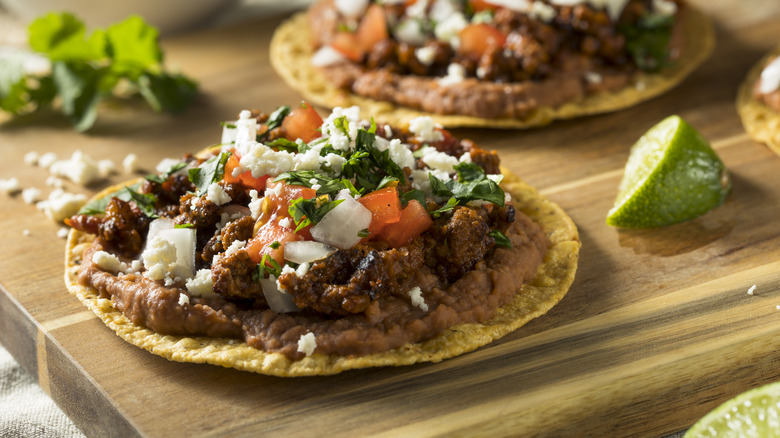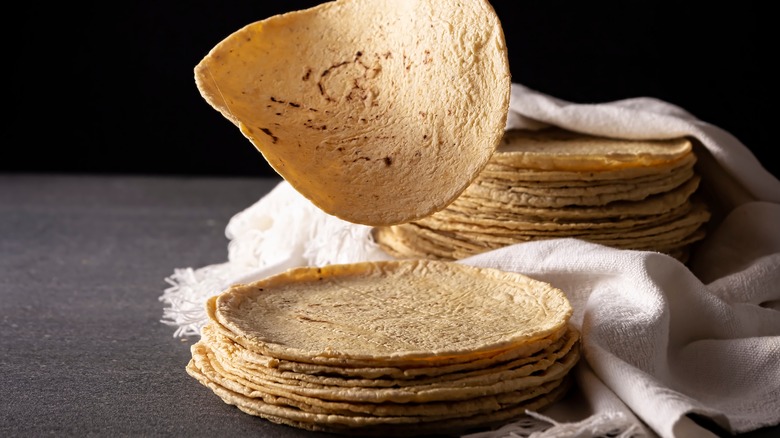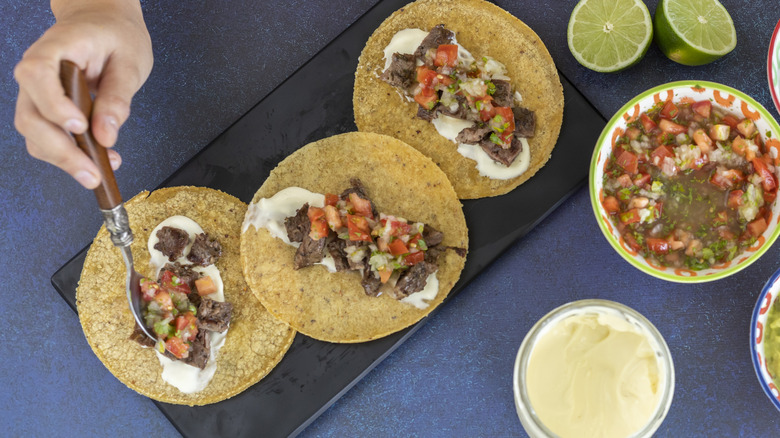What's The Difference Between Tacos And Tostadas?
Tortillas — corn or flour — are a fundamental component of Mexican recipes and culture. Two of their most popular preparations are the taco and tostada. Although they may look similar to the naked eye, key differences exist between these cornerstones of cooking in Mexico, whether topped with grilled or stewed meats, fried fish, beans, or veggies.
Though both tacos and tostadas can be made with corn tortillas, only tacos — and other soft tortilla preparations like burritos, fajitas, and chimichangas — will use a flour tortilla. Tostada means "toasted," and they are served flat because they are crunchy and will break if bent, whereas tacos are pliable, with the tortillas ready to be rolled up or folded around their fillings when it comes time to eat. These are where tacos and tostadas differ, even though you might sometimes find the same filling, salsa, and toppings on both.
Why corn is king for tostadas
Although both corn and flour tortillas can be warmed before use, tostadas require the tortilla to be recooked, whether in a low oven or fried in oil until crisp. This makes it entirely texturally different from a taco (except, perhaps, the hard shells of somewhere like Taco Bell) and thus affects the kinds of toppings used.
The tostada is a popular option for raw or cured seafood, like a ceviche, because of the textural contrast between the crunch of the shell and the softer fish. By comparison, softer corn or flour tortillas are better for stewed or looser toppings, which are more prone to drip off or soak through when eating (the reason why street tacos often come with two tortillas, not one). However, it's also possible to pick a topping that goes well with both formats to enjoy the difference in crispness and flavor more fully, especially if the tortillas are homemade.
How to choose a tortilla
The tostada isn't just based on a corn tortilla due to texture. Corn is indigenous to Mexico and has been central to diets since the Aztec and Mayan empires, thanks to the discovery of nixtamalization. This process, in which corn kernels are boiled with calcium hydroxide, makes them more pliable and is the backbone of making corn tortillas from masa — ground, nixtamalized corn.
Flour tortillas are more common in northern Mexico, like Sonora, where the hot and arid climate is less supportive of growing corn. In an interview with Splendid Table, Mexican food writer Gustavo Arellano explains, "In Texas, the style of tortilla that you're talking about is the classic Tex-Mex tortilla. It's thick, chewy, and almost like a biscuit because the Texans — those los texanos — actually use baking powder in it." By contrast, he describes a Sonorese flour tortilla as "translucent, pliable, buttery and amazing."
Like the difference between taco and tostada, the difference in raw materials determines how to use them best. Now, you just have to decide which toppings and fillings to use.


